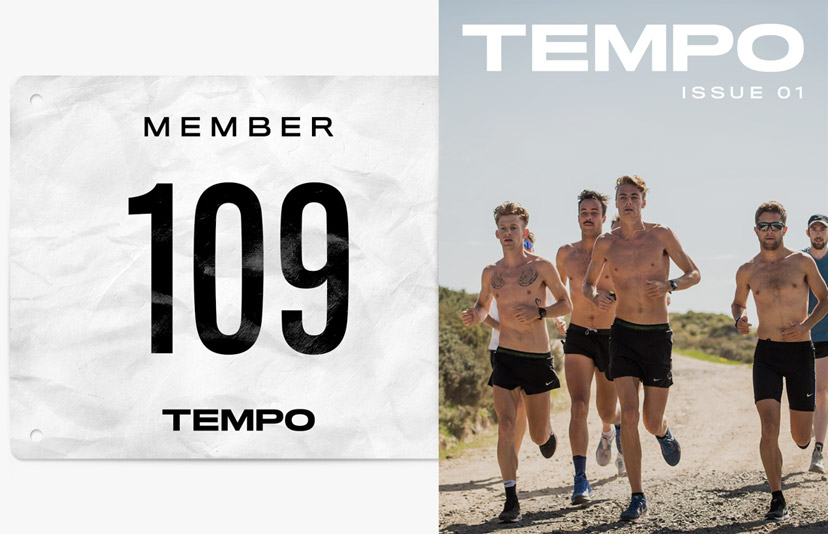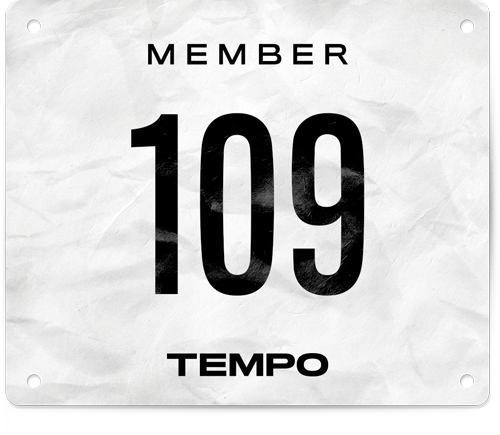Performance
Something in the Air
How Flagstaff has become one of the most popular running destinations in the world
Dave McNeill is more than a TEMPO columnist: he's a three-time Olympian, a physiotherapist and a run coach. Catch him writing for us every couple of months.
When I first came to Flagstaff, Arizona, 15 years ago, I arrived on a rickety little aeroplane from Phoenix. I was not long out of high school and was trying my hand at a year abroad to run on the Northern Arizona University cross country team.
It was August 2007. Monsoon season. A short-lived part of the year in Flagstaff when rains fall and the usually painfully dry humidity of Arizona abates, offering a brief respite when your mouth, lips and nose don’t feel like desert.
That rickety little aeroplane only had 30 minutes to fly from Phoenix to Flagstaff, which made the prospect of my safe arrival seem a little surer. It was dusk and, as we descended into the Flagstaff airport, ponderosa pine trees blanketed a mountainous landscape as far as the eyes could see. Flagstaff is nestled within the Coconino National Forest, which is the largest ponderosa pine forest in the world.
Rumour has it that the phrase ‘Church of the Sunday Long Run’ originated in Flagstaff, a testament to the congregation of runners that unites as a community, worshipping at the foot of the San Francisco Peaks.
Dave McNeill
Stepping off that plane, I was hit by the intense perfume of ponderosa pine carried in the humid monsoon air. It was like walking through a vortex, like falling under a spell. A spell that I find myself still under to this day. It turned a one-year trip abroad into my home of seven years. That sweet smell, capable of drawing your attention to the magic of Flagstaff, keeps me coming back.
Of course, there are many things in the air in Flagstaff, besides the heady smell of pines. Flagstaff gets over 250 days of blue skies each year, but to see it in a photo can be deceiving. Pictures of clear skies often blur memories of the freezing cold, the brutal winds and the uncomfortable dryness permeating the air throughout the year.
Those blue skies have certainly blurred my memories of cold and windy days past. Fifteen years later and here I am again. I arrived in spring. At this time of the year, the most obvious thing in the air is the unabating winds. They stir up juniper pollen, which can make life difficult for allergy sufferers. Of course, they also make life difficult for runners, who are forced to fight their way through furious headwinds.
And yet the spring winds still tend to blow a large congregation of runners into Flagstaff from around the world, ahead of the northern hemisphere track season. The annual Flagstaff training camp represents a pilgrimage for many distance runners.
Among those blown into Flagstaff this spring were a small contingent of first-timers from Australia. Brett Robinson, Rose Davies, Izzi Batt-Doyle and Natalie Rule, plus massage therapist Andrew White, all made the pilgrimage. And like all runners journeying to the Mecca of distance running, fitness was the holy grail.
Fitness seems more assured by coming to Flagstaff. Located at 2,200 metres above sea level, this is high altitude (or medium altitude, in the words of Olympic champion Jakob Ingebrigtsen). Flagstaff’s magic is as much about what’s in the air as what isn’t. Acclimatisation to the altitude involves both physiology and psychology. Spend enough time here and your blood starts to change; it becomes more efficient at moving oxygen around your body. But it also recalibrates one’s perception of discomfort when running hard.
In the thin, dry, gusty spring air, the perfume of ponderosa pine is less obvious. Running here in spring is doubly uncomfortable because of the winds and the altitude. And despite this, every year, more and more runners make the spring pilgrimage to Flagstaff. Something in the air is captivating them.
Being so connected to Flagstaff myself, admittedly, I was keen for my teammates to experience the same captivating spell I fell under 15 years ago. I wanted them to feel Flagstaff’s magic as I have, even if they couldn’t smell it.
Just as more and more runners visit Flagstaff every year, the town has also grown exponentially over the past 15 years. The population in that time has climbed around 20 per cent, which is obvious in the traffic around town. Many things have changed, especially the infrastructure. There are new shops and apartments everywhere. I was glad to learn that, among the newcomers, two new cafes – Single Speed and Lund Canyon – had popped up since last I was here, and might stand up to the impossible standards of a discerning Australian coffee lover. If all else failed, my teammates would at least enjoy their daily caffeine hit.
My hope of captivating my teammates with Flagstaff was off to a rocky start. I over-promised and under-delivered on our first run together. While I had lived here for seven years, my navigational abilities remained poor and we got lost on our run around Wing Mountain. I only hoped their first impression was as short-lived as the many impermanent things in the air here.
Fortunately, there are many permanent things in Flagstaff too. Just like Sydney with its Harbour Bridge and Opera House, Flagstaff is recognisable by the distinct silhouette of the San Francisco Peaks. Mount Humphreys and Mount Elden sit beside each other, towering over the town. Their majesty, particularly at dawn and dusk, never ceases to inspire awe. Most trails in and around Flagstaff, at some point or another, twist and turn to face the peaks. Running towards them simultaneously renders a feeling of both significance and insignificance. Significance in the form of deep gratitude to be standing at the altar of such beauty. And insignificance to feel so small in their shadow.
And while perhaps not as old as the peaks, many Flagstaff institutions garner the same reverence – they house the character and spirit of the mountain town. Oldest among them, Macy’s European Coffeehouse has endured for over 40 years and has seen more Olympians and Olympic medalists through its doors than just about any other establishment in the town. It’s an eclectic little cafe, with an unchanging menu and decor. More contemporary establishments such as Pizzicletta, Tourist Home and Pay ’N Take have a culture of catering for the droves of endurance athletes all around town, whether for a pizza or a refreshing craft beer.
That character and spirit is also contained within Flagstaff’s vibrant running community. Made up of permanent and impermanent residents alike, it’s a community united by the mountains first and the run second. Rumour has it that the phrase “Church of the Sunday Long Run” originated in Flagstaff, a testament to the congregation of runners that unites as a community, worshipping at the foot of the San Francisco Peaks.
For Robinson and White, community proved to be that magic something in the air that would captivate them. “People work together up here,” remarks Robinson. “Every week, I had someone from another country jumping in sessions with me. And every Sunday, you turn up to the long run and there are 50 elite runners, all running together.”
For White, an avid trail runner when he’s not delivering massages, coming to Flagstaff brought to life the many hours of footage he had seen of his trail-running idols frolicking in the mountains of Flagstaff. “Being in Flagstaff and seeing all the trails and people I’d been watching run those trails made me feel like I was part of that running community,” he says. “The way people treat you, and their relaxed attitude, made the whole experience enjoyable.”
For all the tangible and temporary discomforts in the air, there are many more intangible and enduring qualities that seem to win runners over. Flagstaff has become one of the most popular endurance training locations in the world.
I sometimes wonder whether the oxygen deprivation up here incites a sort of amnesia each time you leave. Most people that leave Flagstaff inevitably return from time to time, no matter the discomfort they endure while here. Flagstaff is rich with community, culture and natural beauty, which all seem to fill the oxygen void in the air.
On the thin air of Flagstaff, Davies described a “settling calmness” about it. “I felt really confident about the work we did in the thin mountain air,” she says, and it showed when the 23-year-old punched her ticket to the World Championships and Commonwealth Games with a new 10km personal best at the end of her Flagstaff stint.
The perfume of ponderosa pine wasn’t as strong this time around but, as sure as the San Francisco Peaks endure, I, and a few first-timers from Australia, will certainly be back.


